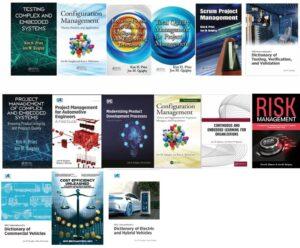Leadership Presence Shift — How Openness Builds Stronger Cultures
Openness Builds Stronger Cultures
In the past few weeks, I’ve been reflecting on a pattern that appears across high-performing, logic-driven organizations: brilliant teams slowly losing momentum because the fight to be proper overshadows the desire to understand. Then I saw this LinkedIn article, which is the genesis of this article. I have worked on teams where this desire to be correct was helpful, but that is predicated on a leadership style that allows for errors and acceptance that these things happen. This tension drains energy, weakens collaboration, and erodes culture. Being correct is essential, very important. This means anybody should challenge the thinking espoused. In one of my management roles, an employee came up to me and said he thought I had mastered listening to the team, changing direction based on new information, and knowing when to stay firm on the approach and the target. Leaders need to know when to stay the course and when to change in response to what is found to be correct, valid, and true. True leadership isn’t about winning arguments, according to Anna Lindhol. This is true, but it goes further than that. A leader knows they are not the font of all good ideas; we need to elicit ideas from team members, determine which are the best and most likely to succeed, and decide how to proceed to ascertain this.
 We (Jon M. Quigley and Shawn P. Quigley) have written extensively on how Leadership Presence Shift is essential when organizations rely heavily on expertise and precision. Their work repeatedly shows that when logic becomes the loudest voice in the room, listening becomes the quietest. From experience, we do not instantly or universally support the idea of deferring to others’ judgment. The data, and what is true, is what is essential, and this often requires a diversity of perspectives (too bad our government folks do not understand this.
We (Jon M. Quigley and Shawn P. Quigley) have written extensively on how Leadership Presence Shift is essential when organizations rely heavily on expertise and precision. Their work repeatedly shows that when logic becomes the loudest voice in the room, listening becomes the quietest. From experience, we do not instantly or universally support the idea of deferring to others’ judgment. The data, and what is true, is what is essential, and this often requires a diversity of perspectives (too bad our government folks do not understand this.
When Logic Dominates, Teams Contract
Presumably, we hire brilliant minds and deep experience, believing these to be remarkable talents available for our organization. The last thing we want to do is unintentionally trigger a shutdown in the availability of this knowledge and skill and discourage the growth of capabilities in this talent base, via unproductive battles over correctness. Jon and Shawn Quigley explain that environments rooted in technical rigor can slip into intellectual combat, where winning overtakes learning. On the other hand, we do not want to build on errant data or a technical misunderstanding. We say rather than contest, find a way to prove or disprove this contest, but do not avoid the contest. Do not create an environment where your team members check out due to this contest. The contest is everything; truth and adequate understanding are essential. You have likely heard the Agile mantra, fail fast and fail often, which does not mean deliberately going out of our way to fail.
When we do not handle this carefully, ideas collide rather than connect. The cost? Lost creativity, diluted trust, and unnecessary friction. The collision is necessary; the stress drives the search for the best answer. But to do that, it will require keeping the team engaged.
Leadership Presence Shift as a Cultural Stabilizer
 The Leadership Presence Shift is about moving from certainty to curiosity. My entire career has been because of curiosity. Being a development engineer raised many questions about the connection to the customer (sales and marketing) and to project management. Both of these are required to deliver effectively, and they are the reasons for both of my master ‘s-level degrees. All three of these are needed to deliver successfully. Our works emphasize that leaders who create psychological space—not argumentative victory—are the ones who transform culture.
The Leadership Presence Shift is about moving from certainty to curiosity. My entire career has been because of curiosity. Being a development engineer raised many questions about the connection to the customer (sales and marketing) and to project management. Both of these are required to deliver effectively, and they are the reasons for both of my master ‘s-level degrees. All three of these are needed to deliver successfully. Our works emphasize that leaders who create psychological space—not argumentative victory—are the ones who transform culture.
Shawn P. Quigley highlights that influence grows when leaders model humility, invite alternate perspectives, and foster constructive dialogue. Leadership presence is not about proving intelligence—it’s about making room for the intelligence of others.
Openness Is the Competitive Edge
When leaders elevate openness and the drive to understanding and certainty, the teams gain:
-
Stronger collaboration through shared ownership
-
Higher innovation through diverse thinking
-
Greater resilience through reduced interpersonal tension
This shift is simple but not easy. It requires awareness, restraint, and commitment—qualities echoed in both Jon and Shawn Quigley’s guidance on building mature, context-driven leadership systems.
So, where might your leadership need more openness than certainty?
Where can a Leadership Presence Shift help ideas meet rather than collide?
For more information, contact us:
The Value Transformation LLC store.
Follow us on social media at:
Amazon Author Central https://www.amazon.com/-/e/B002A56N5E
Follow us on LinkedIn: https://www.linkedin.com/in/jonmquigley/
https://www.linkedin.com/company/value-transformation-llc
Follow us on Google Scholar: https://scholar.google.com/citations?user=dAApL1kAAAAJ


